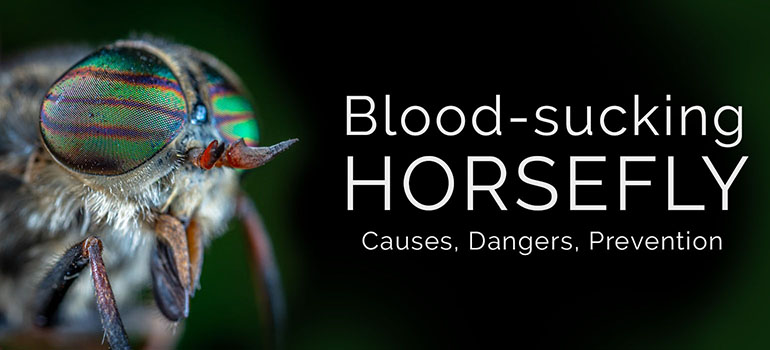
So, you’ve built a pool just in time for summer. But when you try to use it, you are assaulted by large, biting, seemingly indestructible flies.
You try hiding underwater, but they just wait patiently above the water, biding their time until you resurface so that they can hurtle themselves towards you. What are these monsters? What do they want from us? And how can we get rid of them? These monstrosities are horseflies, more commonly known as “clegs” and, as anyone from a rural area will tell you, they are made purely of nightmares.
Table of Contents
Breaking news: Blood-sucking horseflies terrorise the UK!
The recent rise in temperatures has provoked an infestation of blood-sucking horseflies, typically only seen in the Mediterranean region. Multiple news outlets like The Sun, Daily Mail, Police Hour, Independent, and others warn that flying insects may cause serious diseases.
- “BUZZ OFF Plague of vampire horseflies threatens to spread nasty infections via gruesome bites, Brits warned” –

- “Warning issued to Brits after heatwave attracts insects” –

- “Families warned to drain paddling pools to stop vampire horseflies breeding after heatwave” –

- “Horsefly bites: Drain paddling pools to stop biting insects breeding, say experts as reports soar” –

The bug is easily identified because of its visibly bigger size. Unlike the common household fly, it has large, widespread eyes and huge wings. Another big difference between the two types of pest, is that the horsefly has very distinct stout piercing mouthparts and an excruciatingly painful bite.
The female vampire insect feeds of blood, so it can produce millions of eggs. The horsefly uses its serrated mandibles to dig into the skin of mammals, creating a sore wound and pumping it with venom. This can lead to extremely painful infections and swelling that may not be cured with modern antibiotics.
The NHS advises that you see your GP immediately if an insect bite results in the described symptoms. If ignored, it may cause serious scarring from the developed blisters. Limb amputation and death cases have been recorded in the past.
What are Horseflies
Horseflies are large, darkly-coloured flies with visible compound eyes and can range in size from 1cm to 2.5cm. They are most commonly found near horse stables, cattle, standing water, such as ponds and pools, slow-moving streams and rivers, and long damp grass.
As highly adapted visual hunters, they are attracted to large dark objects, movement, and carbon dioxide, all of which are traits found in warm-blooded mammals.
Do horseflies bite?
Yes. And the bites are terrible. Despite being famous for plaguing horses and livestock, horseflies will attempt to bite any large, warm-blooded mammal. However, only females are able to bite as they require blood to produce their eggs, unlike males, who only consume pollen and nectar. If you are bitten by a horsefly, you will know about it very quickly, as the bite can be incredibly painful. This is due to the gruesome way in which horseflies bite.
Female horseflies are equipped with a pair of saw-like mandibles, which are used to rip and slice open skin. Once a wound is opened, they release an anti-coagulant to stop the blood from clotting. As soon as a hole is ripped open, they begin lapping up that sweet, sweet mammal blood.
Can you get an allergic reaction to a horsefly bite?
Horsefly bites are easily recognisable as they differ from other insect bites. They are painful, itchy, and surrounded by red, swollen skin. As the bites are not puncture wounds, they also take longer to heal and are more likely to become infected. Severe allergic reactions to horsefly bites are rare, but should any of the following symptoms appear, you should contact a medical professional immediately:
- Dizziness or weakness;
- Wheezing;
- Redness and swelling around the eyes and lips;
- Swelling of the face, lips, hands, and feet;
- Tongue and throat swelling;
- Nausea, vomiting, or diarrhoea;
- Difficulty swallowing or breathing.
What Attracts Horseflies?
Light & Sunshine
So why are horseflies frequent visitors to your outside pool? It’s not because their butterfly skills (pun not intended) are rusty. It’s more because these species are especially attracted to light reflections. This makes your pool a natural habitat for horseflies.
Food Sources (Blood & Nectar)
Even though both female and male flies snack on flower juice, the female horsefly is the one that needs additional elements in its diet for its eggs, and that is blood.
Carbon Dioxide
Another attractor to horseflies is the CO2 that you and every other mammal on Earth breathe out. Horsefly organisms have developed natural ways to track down carbon dioxide that unsuspecting targets emit.
Things That Move
Horseflies are known to chase moving, dark-coloured items. So, if you are passing by a horsefly-infested area on a hot day, you might want to wear bright clothes.
Are you dealing with a pest infestation? You don't have to be alone in the battle against pests. Hire a professional pest expert!
How to get rid of horseflies around the swimming pool?
Although they are aggressive spoilers of fun, you don’t have to let horseflies ruin your enjoyment of the pool. Here are some methods you can use to get rid of the hellspawn that is horseflies.
- Sticky fly paper. Unravel and hang fly paper around the pool area. These hanging strips will attract and trap horseflies, as well as other flying pests. Replace them as needed or when the paper starts to get crowded. Also, try not to walk into them. It is a disgusting experience, trust us.
- Pesticides. Spray the pool area and your immediate vicinity with natural pesticides that contain pyrethroids. These pesticides are made from dried chrysanthemum plants and are safe for use around children and pets. For other areas of your garden, alternate between using organophosphate and organochlorine-based pesticides to ensure that the horseflies won’t develop a tolerance to a specific type of pesticide.
- Light traps. The light given out by these traps was specifically developed to attract many types of flying pests. As soon as they come into contact with the light, they become zapped and, in most cases, instantly killed. Place one or more of these traps around the pool area to quickly kill the horseflies. Since they are powered by electricity, remember to place them out of reach to prevent them from getting splashed.
- Bag traps. These types of traps are made up of two elements: a bag holding fly food that attracts flies and a funnel which allows entry but stops flies from leaving. This trap appears to be one of the most effective ways to get rid of horseflies. However, the smell of fly food and trapped flies is quite pungent and overpowering. It is best to place one or more of these traps at a good distance away from the pool or any other areas where people congregate. Don’t worry about its effectiveness, though – horseflies cannot resist the bait.
- Horsefly traps. These are large, hanging traps with moving parts designed specifically to attract horseflies. By the time they realise that what they’ve landed on is not their prey, they will become trapped between the parts and killed by the heat of the sun-warmed metal. Hang this type of trap in an area that is exposed to a lot of sunlight during the day for maximum effect.
Read: How to Get Rid of Flies?
How to prevent horseflies from invading?
When it comes to horseflies, prevention is just as important as getting rid of them. Try putting these methods into practice to stop horseflies from encroaching on your summer fun.
Mow your lawn and weed regularly
Horseflies love long damp grass and weeds as this environment provides them with the perfect breeding ground and acts as a cool refuge during the hottest part of the day. Keeping your grass short and your garden weed-free deprives horseflies of their favoured summer retreats. This will reduce the number of little beasts that visit your garden and pool.
Burn citronella candles and lamps around the pool area
Citrus smells repel many types of biting insects, and those few intrepid insects which brave the citrus area will find their senses dulled and will have a harder time landing on you.
Keep the pool area free of food and trash
Almost all flies are attracted to food and trash, so make sure to maintain a clean pool area and keep bins as far away from the pool as possible.
Cover your pool
Keep your pool covered for as long as possible during the months of June, July, and August, as these are the months during which horseflies are most active. You can still use the pool just remember to cover it when you are finished partying.
Are you dealing with a pest infestation? You don't have to be alone in the battle against pests. Hire a professional pest expert!
How to treat a horsefly bite?
🐞 Suffering from bug or horse fly bites?
Here’s all you need to know about how to treat and avoid them:#horseflies #summer #insects pic.twitter.com/lg3nnh99qw— BBC Breakfast (@BBCBreakfast) 16 July 2018
Treating a horsefly bite is fairly simple and is similar to treating other insect bites. If you are bitten, you should:
- Clean the wound with plain warm water and a cotton cloth or cotton wool;
- Apply a cold compress to the area for 10 to 15 minutes to reduce the swelling;
- Do not scratch the bite, as it could make the wound worse or lead to an infection.
Remedies, such as vinegar or sodium bicarbonate, are not recommended as they won’t really help. It is also worth remembering that a horsefly will not leave any part of itself (stinger, mandibles) behind in the wound. Some over-the-counter treatments which can prove useful include:
- Paracetamol or ibuprofen – take any of these if the pain from the bite is too overwhelming;
- Crotamiton cream, hydrocortisone cream or antihistamine tablets – will help you fight the unbearable need to scratch the wound;
- Antihistamine tablets – sometimes ice packs aren’t enough. If that happens, go with these tablets.
Check also:
Due to the way horseflies bite, the wounds are more prone to infection than with other insect bites. During the healing process, you should be wary of an infection, so keep the wound clean and resist the urge to scratch it. Signs of infection to look for are:
- The skin around the bite becomes redder;
- Increased swelling and pain;
- Pus or other discharge.
If any of the above symptoms appear, you should visit your doctor for further advice and treatment as antibiotics may be needed.
Frequently Asked Questions About Horseflies:
What is the scientific name of a horsefly?
In the scientific world, the horsefly is also known as Tabanus Sulcifrons. According to Wikipedia, it belongs to the Tabanidae family, insect order Diptera.
What is another word for a horsefly?
The horsefly or horse-fly, as you might find stylized on other sites, is also called: breeze fly, stout, cleg or gadfly. The word gad means a sharp-pointed object and was given to the fly by the country folk. They didn’t distinguish between different insect bites, and so this word is general for all biting insects.
What is the life cycle of a horsefly?
Each fly, regardless of its type has 4 life cycles: egg, larva, pupa and adult. Horseflies, in particular, have an adult lifespan of anywhere from 30 to 60 days. Their entire life expectancy from egg to the final stage ranges between 1 and 3 years.
What is the purpose of the horsefly in its natural ecosystem?
The purpose of horseflies is to breed and serve as food, mainly for other insects and birds. Adult horseflies feed on nectar, so occasionally, they pollinate flowers. However, only females suck on blood. The proteins and salt contained in the blood help horseflies produce more eggs. If your real question was, “What are horseflies useful for anything that benefits humans?” then apart from pollination, the answer is “no, for nothing, really”.
What is the speed of a horsefly?
An adult horsefly can reach a maximum speed of more than 140 km/h, which is almost 87 mph, while for a period of up to 6 hours, 20 to 30 flies can suck up to 200 millilitres of blood from their prey.
What time do horse flies come out?
Horseflies tend to appear for 2 months, July and August.
Do horseflies come out in the rain?
Although there is no scientific proof, rumours have it that horse flies appear during and after rainfall.
Do horseflies come out at night?
Their love for sunshine is why you won’t see much horsefly activity after dark – horse flies actually do not come out at night.
Are horseflies territorial?
Horseflies seem to be extremely territorial. Once you manage to get rid of one already on your property, others won’t rush in to take its place.
Are you dealing with a pest infestation? You don't have to be alone in the battle against pests. Hire a professional pest expert!
When do horseflies go away?
Horseflies are particularly frequent during summertime and periods of high heat. Towards the beginning of autumn (Mid-September – October), they gradually hide away and are completely gone when it gets colder.
Read: Fly Lifespan
Now that you know how to identify, remove, and repel horseflies, just remember to keep your lawn properly maintained and invest in some fly traps and citronella tiki lamps. Otherwise, just invest in a fly pest control professional, and you will be on your way to a bite-free summer.


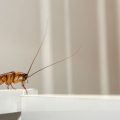

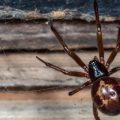
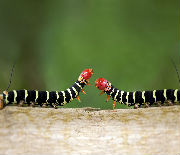
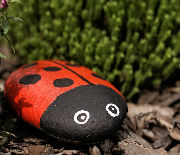
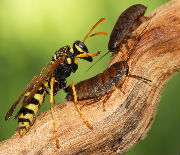
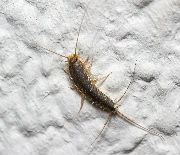
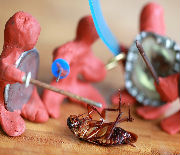
Leave a Reply